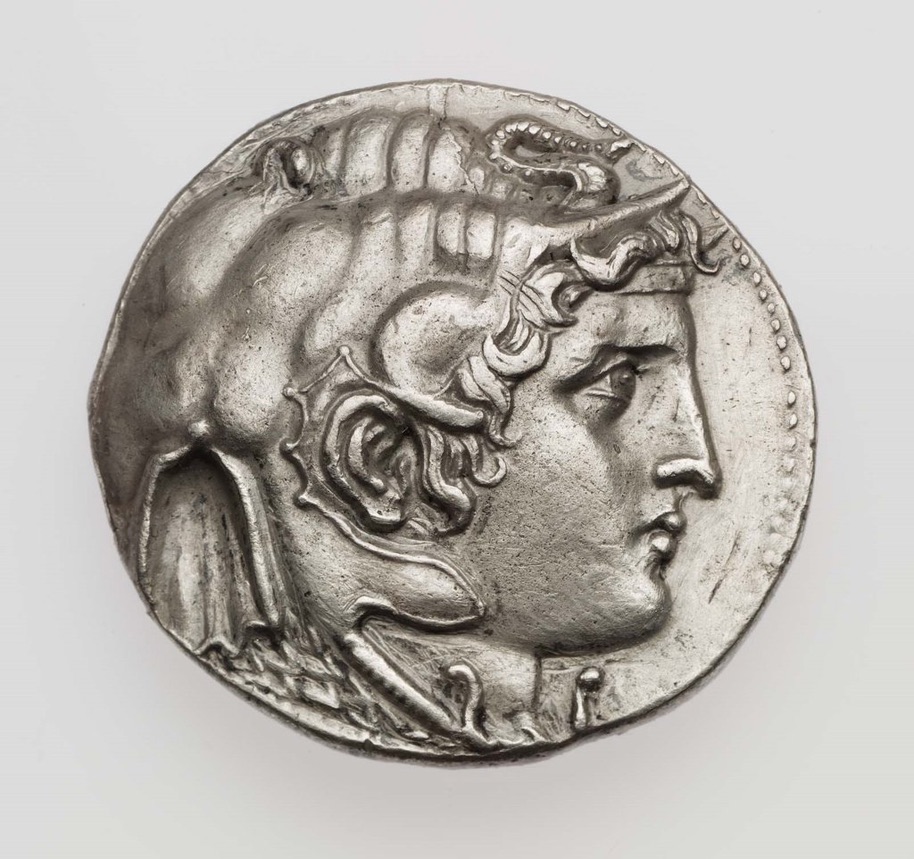Ptolemy I, Alexander the Great’s most canny general, famously diverted Alexander’s funeral cortège as it made its way from Babylon to Macedon, handily taking possession of his body in order to bolster his legitimacy as a Successor.
So too did Ptolemy lay claim to Alexander’s image, brilliantly so on coin types struck in the first decades of his rule, such as the tetradrachm shown. I just love these clever coins….
Under Alexander, the most common coin type featured Herakles (one of his mythological ancestors) in profile facing left: beardless, and wearing his signature lion-skin which is drawn over his head and tied around the neck by its paws.


Ptolemy’s coins hijacked this familiar format and added an ingenious iconographical innovation: now Alexander himself dominates the obverse. Those eyes, those lips, those curls – it’s him! And rather than Herakles’ played out lion-skin, he wears an elephant skin draped over his head, small tusks jutting over his forehead and with the trunk above it. The elephant featured large in the Hellenistic imagination, with a strong connection to Alexander who encountered the strange creatures during combat in India.
Other kingly and divine attributes of note are the scaley aegis (usually associated with Athena) around his shoulders and the royal diadem on his brow peeking out from the elephant skin. I would also point out the disposition of that curiously snakey trunk curling over Alexander’s forehead. It has fascinated me for two decades now, as it looks suspiciously like the uraeus – the rearing cobra – traditionally attached front and center on Pharaonic crowns. This cannot have been accidental. Ptolemy has struck again!
The extreme sensitivity with which Ptolemy played with new and existing iconography, Alexander’s legacy, and the traditions of his adopted Egypt is remarkable. It certainly is why his dynasty outlasted his peers by centuries, and it is on bold and brilliant display on this coin.




